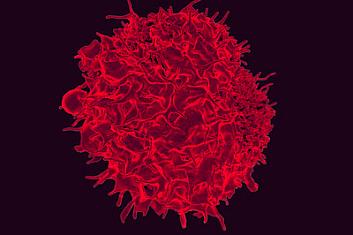Report Finds Cancer Deaths Continue Downward Trend

WASHINGTON — The death rate from most cancers continued to decline over a four-year period extending from 2015 to 2019, according to the latest Annual Report to the Nation on the State of Cancer from the National Institutes of Health.
During roughly the same period, the number of new cases of cancer remained relatively stable for men and children, but increased for women, adolescents and young adults.
This year’s report, published in the journal Cancer, also highlights longer-term trends in pancreatic cancer, as well as racial and ethnic disparities in incidence and death rates for many individual cancer sites.
“[This] report is good news in our fight against cancer and is a reminder of the importance of President Biden’s Cancer Moonshot initiative,” said Department of Health and Human Services Secretary Xavier Becerra in a written statement.
“I’m deeply impressed by the progress we’re making against cancer and firmly believe we can meet the president’s goal of reducing the death rate from cancer by at least 50% over the next 25 years. We can and must end cancer as we know it,” he added.
The Annual Report to the Nation on the Status of Cancer is a collaborative effort among the National Cancer Institute, part of the National Institutes of Health; the Centers for Disease Control and Prevention; the American Cancer Society; and the North American Association of Central Cancer Registries.
The report is based on a combined cancer incidence data set from NAACCR composed of data collected by the CDC’s National Program of Cancer Registries and the NCI’s Surveillance, Epidemiology, and End Results Program, as well as mortality data from the CDC’s National Center for Health Statistics.
All of the findings in this report are based on data from before the COVID-19 pandemic.
The report shows that from 2015 to 2019, overall cancer death rates decreased by 2.1% per year in men and women combined. Among men, death rates decreased by 2.3% per year; among women, death rates decreased by 1.9% per year. The annual declines in death rates accelerated from 2001 to 2019 in both men and women.
The declines in death rates were steepest in lung cancer and melanoma (by 4% to 5% per year) among both men and women. Death rates increased for cancers of the pancreas, brain, and bones and joints among men, and for cancers of the pancreas and uterus among women.
“The findings in this year’s Annual Report to the Nation show our ongoing progress against cancer, continuing a more than two-decade trend in declining mortality that reflects improvements in preventing, detecting, and treating cancer,” said Monica Bertagnolli, M.D., director of the National Cancer Institute, in a press release describing the research.
“The advances shown in the report underscore the importance of working together across society to develop effective, equitable approaches to tackle this complex disease. I look forward to working with all our partners in the cancer community to meet these challenges head on, because people affected by cancer — and that includes all of us — are counting on it,” Bertagnolli said.
The researchers noted that the increases in survival for both adenocarcinomas and neuroendocrine tumors are tempered by the overall increase in the incidence of pancreatic cancer, which is generally attributed to the growing prevalence of obesity.
And progress in treating pancreatic adenocarcinomas, which account for 80% of pancreatic cancer cases, remains incremental at best, the researchers said.
Dan can be reached at [email protected] and at https://twitter.com/DanMcCue

























